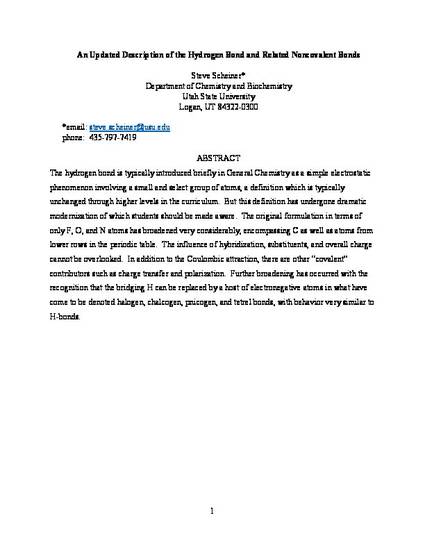
The hydrogen bond is typically introduced briefly in General Chemistry as a simple electrostatic phenomenon involving a small and select group of atoms, a definition which is typically unchanged through higher levels in the curriculum. But this definition has undergone dramatic modernization of which students should be made aware. The original formulation in terms of only F, O, and N atoms has broadened very considerably, encompassing C as well as atoms from lower rows in the periodic table. The influence of hybridization, substituents, and overall charge cannot be overlooked. In addition to the Coulombic attraction, there are other “covalent” contributors such as charge transfer and polarization. Further broadening has occurred with the recognition that the bridging H can be replaced by a host of electronegative atoms in what have come to be denoted halogen, chalcogen, pnicogen, and tetrel bonds, with behavior very similar to H-bonds.

This is a post-peer-review, pre-copyedit version of an article published in The Chemical Educator.